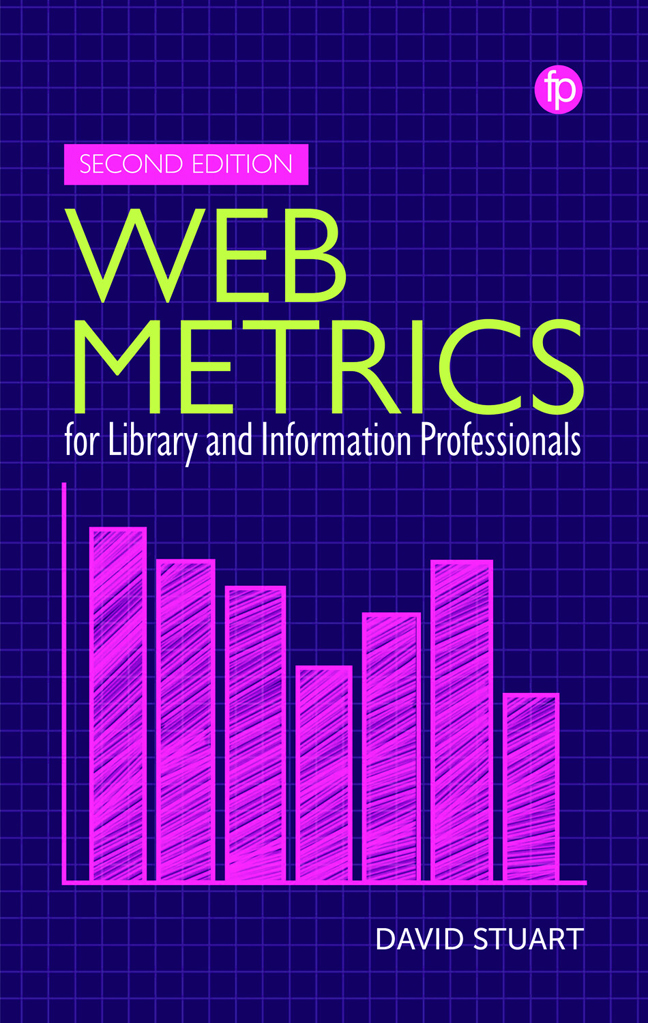Book contents
- Frontmatter
- Contents
- Figures and Tables
- About the Author
- Preface to the Second Edition
- 1 Introduction
- 2 Bibliometrics, Altmetrics, Web Metrics and Webometrics
- 3 Data Collection Tools
- 4 Evaluating Web Impact
- 5 Evaluating Social Media Impact
- 6 Relational Web Metrics and Social Network Analysis
- 7 Web Bibliometrics
- 8 Web Metrics for Data and Code
- 9 The Future of Web Metrics and the Library and Information Professional
- References
- Index
9 - The Future of Web Metrics and the Library and Information Professional
Published online by Cambridge University Press: 20 December 2023
- Frontmatter
- Contents
- Figures and Tables
- About the Author
- Preface to the Second Edition
- 1 Introduction
- 2 Bibliometrics, Altmetrics, Web Metrics and Webometrics
- 3 Data Collection Tools
- 4 Evaluating Web Impact
- 5 Evaluating Social Media Impact
- 6 Relational Web Metrics and Social Network Analysis
- 7 Web Bibliometrics
- 8 Web Metrics for Data and Code
- 9 The Future of Web Metrics and the Library and Information Professional
- References
- Index
Summary
Whenever you can, count.
(Sir Francis Galton, 1884)Introduction
This last chapter considers the potential future of web metrics and its relationship with librarians. The future of web metrics as written in the first edition of this book is now, to a certain extent, the past. As was noted at the time, it would be a fool's errand to attempt to predict the emergence of any specific new technology or tool, or the future dominance of any particular website, but it is reasonable to expect certain current trends to continue, such as more data and more web metrics. It was also expected that much of the data would be open, although this prediction was always less certain and now requires a more nuanced discussion. It is also necessary to add two new predictions: ‘More AI’ and ‘More Caution’, the second of which is more in hope than expectation. Each of these trends will have potential ramifications for web metrics and how they can be used by librarians.
Before we hurtle towards the future it is important to pause for a moment and reflect on how far we have come, not only in this book but with web metrics.
How far we have come
As would be expected of a book called Web Metrics for the Library and Information Professional, this book has discussed a wide range of tools and sources. These have included: web crawlers, social network sites, APIs, data aggregators, visualisation software and programming packages. The full list would be a long one, and as we necessarily move rapidly from one technology to another it is easy to overlook the scale of what is being discussed. After all, it is not unreasonable to liken the development of web crawlers and services such as Google Trends to early examples of scientific instruments that provided insights into the physical world.
When Robert Hooke's Micrographia was published in 1665 he created the world's first scientific best-seller. His modified microscope allowed him to create intricate drawings of objects whose finer details had largely been unseen, although the objects themselves were familiar to 17th-century gentlemen. Hooke's drawings included fleas, lice, nettle stings and even crystals of frozen urine, and he is credited with increasing interest in microscopy more widely.
- Type
- Chapter
- Information
- Web Metrics for Library and Information Professionals , pp. 153 - 164Publisher: FacetPrint publication year: 2023

